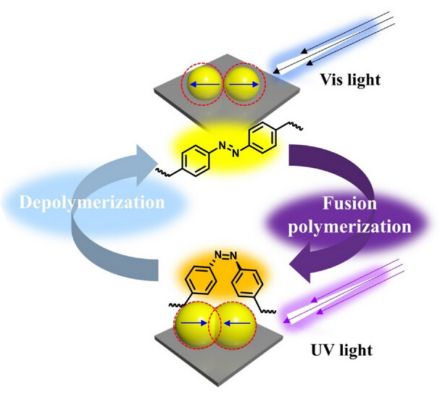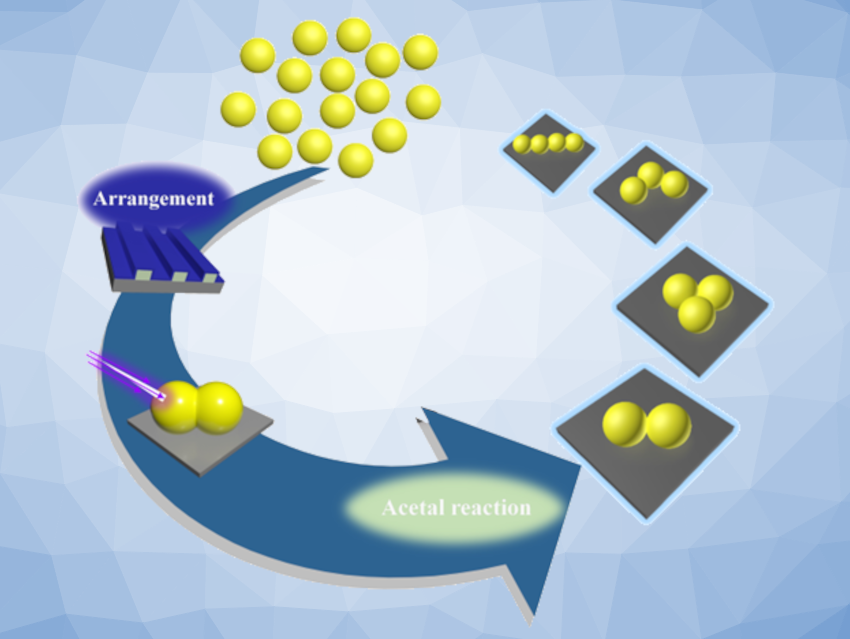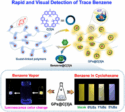Polymer microspheres are interesting research targets due to their unique properties. They could have applications, e.g., in chiral recognition materials, drug delivery, or light-emitting materials. The introduction of azobenzene groups into polymer microspheres could give them photoresponsive properties due to the reversible photoisomerization of the azo units.
The shape of the polymer microspheres is a significant factor for their potential functions. Using photoisomerizations, the shapes and sizes of polymer microspheres with azo groups could be changed in a straightforward and controllable manner under light irradiation. Such shape and size changes can then allow for reactions between adjacent microspheres, which could be useful, e.g., for the construction of microsphere clusters.
Reversible Fusion
Xiaoxiao Cheng, Soochow University, Suzhou, China, Qingping Song, Anhui Polytechnic University, Wuhu, China, Wei Zhang, Soochow University and Anhui Polytechnic University, and colleagues have achieved the photoinduced fusion of azobenzene polymer microspheres to obtain microsphere clusters (pictured above). For this, the team used the reversible trans-cis-trans photoisomerization of azo units (pictured below).
The researchers first prepared monodisperse azobenzene polymer microspheres using dispersion polymerization in ethanol. Then, the microspheres were submitted to UV light and visible light irradiation to induce trans–cis-trans photoisomerization reactions. In the dry state, UV light could be used to fuse the microspheres, while visible light separated adjacent microspheres. The team attributes this effect to the changing properties of the polymer chains, which can intertwine to fuse microspheres.

Chemical Crosslinking
The researchers obtained azobenzene polymer microsphere clusters with high stability and different topological structures by combining this photoinduced fusion with an in-situ acetal reaction for chemical crosslinking. For this, cross-linkable hydroxyl groups were introduced into the polymer.
The microspheres can also be arranged into different topological structures using photolithography templates. The chemically crosslinked microsphere clusters show high stability and can maintain their topologies, e.g., under intense ultrasound.
- Photo‐induced fusion of monodisperse polymer microspheres: A novel strategy for constructing topological microsphere clusters with improved stability,
Zixiang He, Su Shen, Gong Zhang, Tengfei Miao, Xiaoxiao Cheng, Zhao Wang, Qingping Song, Wei Zhang,
Aggregate 2023.
https://doi.org/10.1002/agt2.351




